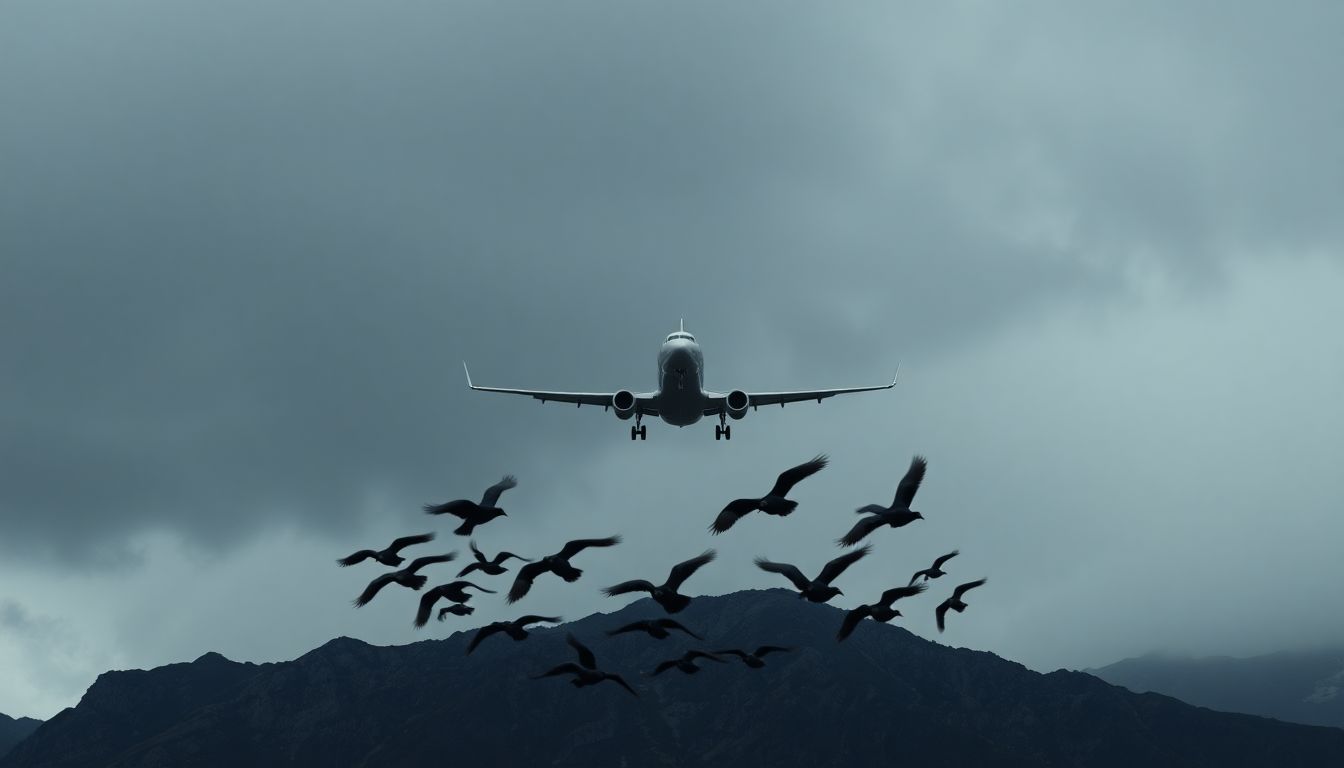
South Korea Plane Crash: Bird Strike Warning Precedes Tragedy
The recent plane crash in South Korea has shocked the world, claiming the lives of 179 passengers and crew. As investigations unfold, details emerge about critical warnings issued just moments before the disaster. This tragedy raises urgent questions about aviation safety and the need for effective bird strike prevention.
Devastating Loss: The Aftermath of the South Korea Air Disaster
Confirmed Casualties and Initial Response
The devastating incident resulted in a staggering loss of human life. Authorities confirmed that all 179 onboard lost their lives. Emergency services worked tirelessly to recover victims and assess the situation. Shock and grief enveloped the nation as families awaited news.
International Reactions and Condolences
Governments and organizations worldwide extended their condolences. Messages from world leaders expressed sympathy and support for South Korea. Vigils and memorials sprang up in various countries, honoring those who lost their lives in the crash.
Ongoing Search and Rescue Efforts
Rescue teams rushed to the crash site. While the focus shifted to recovery, the need for answers became critical. Investigators combed through the wreckage for clues to understand what went wrong.
The Bird Strike Warning: A Critical Timeline
Air Traffic Control Communications: The Minutes Before Impact
Minutes before the tragic impact, air traffic controllers issued a warning about potential bird strikes. This preemptive alert highlighted the dangers posed by wildlife near airports. Communication records are now under scrutiny to understand the situation better.
Pilot’s Response and Attempts at Mitigation
The pilots received the warning just minutes prior to takeoff. They made immediate adjustments and attempted to abort the flight. Unfortunately, their efforts were not enough to prevent the impending disaster.
Analysis of the Warning System’s Effectiveness
The incident raises questions about the current warning system. How effective can it really be? Investigators will examine the communication process to identify any gaps that may have contributed to the tragedy.
Investigating the Crash: Uncovering the Cause
Preliminary Investigation Findings and Next Steps
Initial investigations revealed significant mechanical failures. However, the precise cause remains under exploration. Authorities will analyze the plane’s black boxes for critical insights as they piece together the events leading to the crash.
Role of Bird Strike Prevention Measures at Airports
Bird strikes are a known risk in aviation. Airports have implemented various measures to mitigate these hazards. From habitat management to wildlife awareness programs, effective strategies are essential for enhancing safety.
Potential Contributing Factors Beyond the Bird Strike
While the bird strike is a focus, other factors might have played a part. Weather conditions, pilot training, and aircraft maintenance must all be examined thoroughly. A comprehensive evaluation is needed to understand the full picture.
Aviation Safety Protocols: Lessons Learned
Examining Current Bird Strike Mitigation Strategies
Bird strike mitigation strategies are crucial. Airports can utilize several methods, such as:
- Habitat alteration
- Use of trained birds of prey
- Implementing noise deterrents
These strategies can help reduce bird populations near runways, ultimately enhancing flight safety.
International Standards and Best Practices
Aviation authorities worldwide maintain standards to protect against bird strikes. These practices must be carefully followed but can vary from one region to another. Establishing global best practices for bird strike prevention is vital.
Recommendations for Enhanced Safety Measures
To improve aviation safety, experts recommend:
- Increasing awareness training for pilots and crews
- Enhancing radar and detection systems
- Collaborating with wildlife agencies for effective management
These steps could lead to more robust safety protocols moving forward.
Impact on Air Travel and the Aviation Industry
Public Confidence and Traveler Anxiety
The crash has undoubtedly shaken public confidence. Travelers may feel anxious about flying, especially in regions known for bird strikes. Airlines must work diligently to restore trust among passengers.
Economic Implications for Airlines and Airports
The financial ramifications for airlines can be substantial. Increased safety regulations may lead to higher operational costs. Airports may also face stricter regulations, affecting their bottom line.
Long-Term Effects on Aviation Safety Regulations
This tragic incident will likely influence aviation safety regulations. Authorities may introduce new requirements for bird strike prevention measures. The goal will be to ensure safer skies for all travelers.
Conclusion: Honoring the Victims and Preventing Future Tragedies
Key Takeaways and Lessons from the Disaster
As the aviation community mourns the loss of life, there are crucial lessons to learn. Understanding how to better manage bird strike risks must be a top priority for all stakeholders in the industry.
The Path Forward: Strengthening Aviation Safety Globally
Going forward, a collaborative effort is essential. All countries must come together to develop comprehensive strategies that protect lives. Commitment to safety will be the cornerstone of restoring confidence.
Remembering the Passengers and Crew
In this somber moment, we must remember the victims. Their lives were cut short in a tragic event that could have been prevented. Honoring their memory means ensuring that the aviation industry does everything possible to prevent future tragedies.
Pat Cummins’s Day 4 Decision: Why No Declaration Against India?






